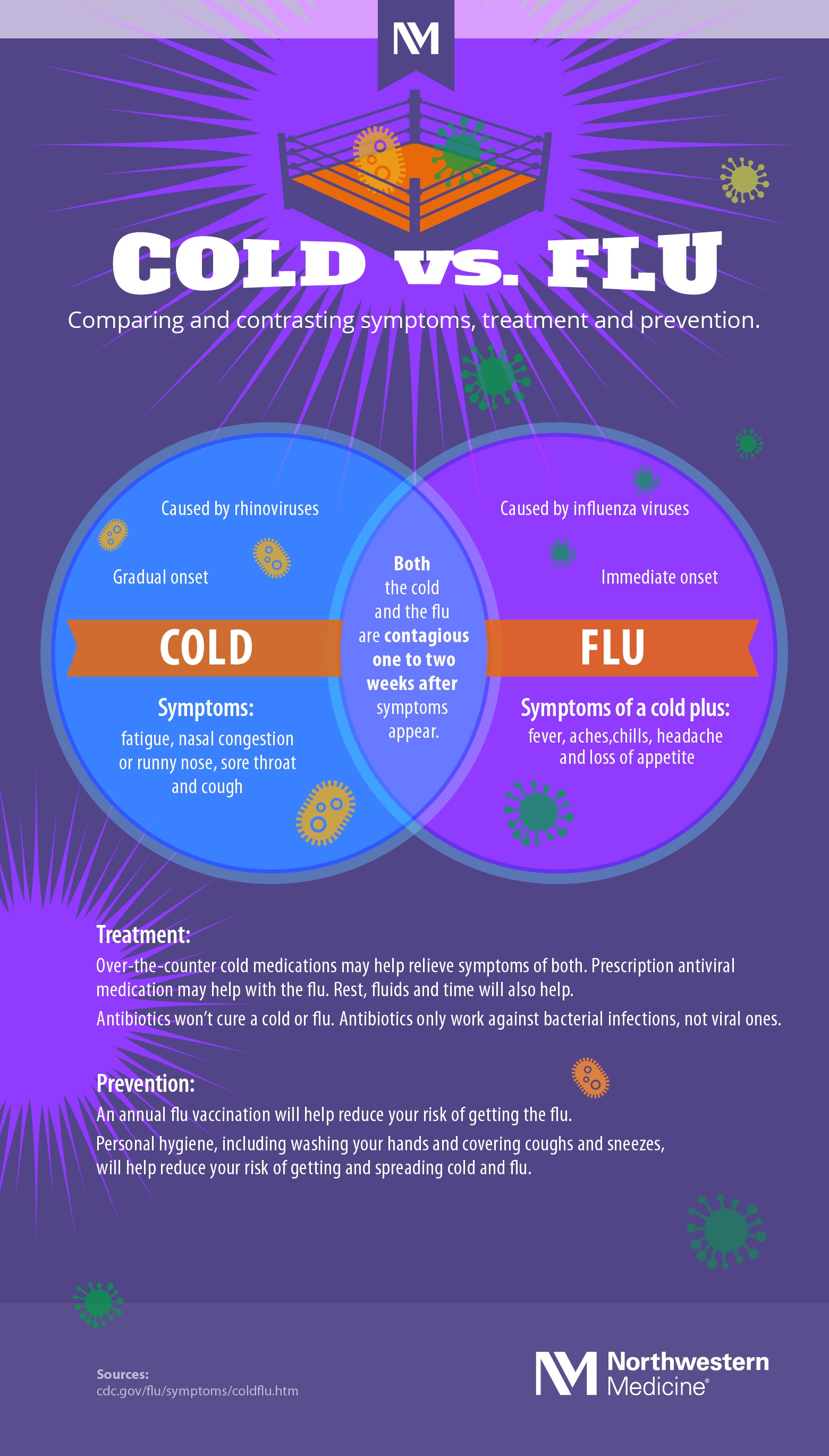What’s the Difference Between Cold and Flu? [Infographic]
Symptoms, Treatment and Prevention
Updated October 2023
Both can make you miserable, but a cold and the flu are caused by different viruses.
Rhinoviruses cause the common cold, and influenza strains cause the flu, says Northwestern Medicine Immediate Care Physician Lubna S. Madani, MD. While they both affect the respiratory system with similar symptoms that usually go away on their own, there are some key differences between them.
Symptoms and Treatment for the Common Cold
Sniffles in summer? Colds aren’t seasonal — you can catch them any time of the year. “More than 200 different viruses can cause colds, so there is no vaccine for prevention,” says Dr. Madani. There is no cure for the common cold. It will get better on its own. Antibiotics do not work against viruses that cause the common cold and will not help you feel better.
Colds develop gradually, with mild symptoms over a few days felt mostly in your head and nose. They typically clear up in seven to 10 days. Fevers and fatigue are rare, as is loss of appetite. The best treatment for a cold is rest and hydration, but over-the-counter cold medications, including antihistamines, decongestants and anti-inflammatory medications, may help you manage symptoms. If you have questions about which medications may work best for you, consult your primary care physician.
If you have a cold, you should avoid direct contact with others, and take personal hygiene precautions like frequently washing your hands to avoid the spread of germs. You are contagious for one to two weeks after your symptoms appear, even though you may feel better.
Symptoms and Treatment for the Flu
Wheezing in winter? The flu is seasonal, most often occurring between the fall and spring, peaking in the winter.
“The flu tends to come from a specific strain of influenza, and therefore flu shots are recommended as prevention,” says Dr. Madani. “If you do catch the flu, it typically comes on quickly, with a high fever of more than 100 degrees F.”
Flu symptoms affect the whole body with severe exhaustion, sometimes characterized by the acronym FACTS: fever, aches, chills, tiredness, sudden. Other symptoms can include cough, sore throat, and runny or stuffy nose. Nausea, vomiting and diarrhea are sometimes symptoms of the flu, though this is more common in children than adults. Like a cold, hydration and rest are the best treatment for the flu. Over-the-counter decongestants and pain relievers may help relieve symptoms. Prescription-only antiviral medication may be available from a physician depending on the severity of your illness.
If you have the flu, you should stay home for 24 hours after your fever has disappeared. After this point, you will still be contagious for one to two weeks, so you should take similar personal hygiene precautions as you would for the common cold to protect those around you.
Prevention
Flu shots are highly effective in preventing the flu, and everyday measures like washing your hands, sleeping well and drinking lots of water can help protect your body from both the cold and the flu.
 Download What’s the Difference Between Cold and Flu? [Infographic]
Download What’s the Difference Between Cold and Flu? [Infographic]






